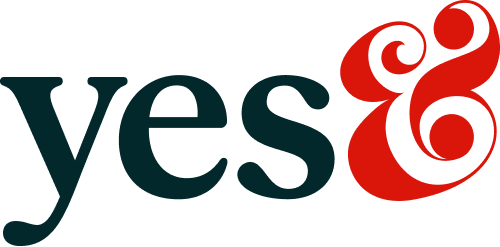The surprising way “Yes, and…” rewires brains, sparks creativity, and gets teams moving again.
Every team gets stuck. Meetings circle endlessly, the same three people talk, ideas die on the table. Energy drains. Hope fades.
Sound familiar?
That’s because most teams live in the land of “No.” No, that won’t work. No, we tried it before. No, we don’t have the budget.
Here’s the thing: “No” feels safe. But it kills creativity.
Improv offers a better map. Two small words—Yes, and…—turn dead ends into discoveries.
Why Teams Get Stuck
Blame your brain. When it senses risk, it triggers fight, flight, or freeze. On a team, that looks like:
- Fight: The loudest voice bulldozes.
- Flight: The quieter ones vanish into silence.
- Freeze: Everyone checks out, waiting for the meeting to end.
Add deadlines, rules, social hierarchy, and the fear of looking foolish, and you’ve got a creativity graveyard.
The Improv Cure
Improv is more than comedy. It’s survival, in real time. Performers step on stage with nothing but trust and a few rules:
- Say “Yes, and…” Accept an idea, then make it bigger.
- Celebrate mistakes. They’re not wrong. They’re raw material.
- Make your partners look brilliant. Star power kills collaboration. Co-starring fuels it.
- Listen like your life depends on it. No scripts, no agendas. Just presence.
- Let go of control. If you already know the answer, you’re recycling the past.
Five Games that Unstick Teams
You don’t have to set foot on a stage to practice. Try these in your next meeting:
- “What Are You Doing?”
How it works: One person asks, “What are you doing?” The other replies with a two-word phrase: first word starting with “A,” second with “B.” (“Analyzing breadsticks.”) The asker then acts out that phrase. Play continues around the circle, each answer moving to the next letter pair.
Why it works: Constraints force creativity. The silliness breaks tension and warms up the room.
- The Vacation Game.
How it works: Two teammates plan a trip. Whatever one suggests, the other accepts and builds on. (“Let’s go to Alaska.” “Yes, and let’s travel by dogsled.” “Yes, and bring Taylor Swift as our tour guide.”)
Why it works: A live demo of “Yes, and …” thinking—ridiculous on purpose, but liberating.
- The Limerick.
How it works: Five players build a poem, one line each, in the classic rhyme and rhythm.
Why it works: Rules (meter, rhyme) channel creativity. People surprise themselves with what they invent under pressure.
- The Gibberish Expert.
How it works: One person pretends to be an “expert” on a nonsense topic (“horse plumbing”) and speaks in a gibberish. A partner “translates” their answers for the group.
Why it works: Forces deep listening and fast collaboration. Plus, it’s hilarious.
- Enter the Incongruous.
How it works: Show the team a random photo (astronauts on the moon) and ask them to write ad copy for an unrelated product (a zero-calorie bagel).
Why it works: Mashes up incongruous ideas. Sparks original connections you’d never reach logically.
Stop Killing Ideas
Next time someone pitches something wild, don’t be the “No” guy. Try this instead:
“Yes, and what if we shot it on an iPhone? Yes, and the money we save could buy a Beyoncé jingle. Yes, and…”
Is Beyoncé calling you back tomorrow? Probably not. But the exercise proves the point: ideas get stronger when you let them breathe.
Your Next Scene
We run improv workshops that prove it. Josh Golden, Yes&’s President and Chief Creative Officer, has used improv to get teams unstuck for years. Before leading an agency, he was an actor, writer, director, professor—and, yes, an improv performer.
Want your team to stop circling and start creating? Let’s play.




